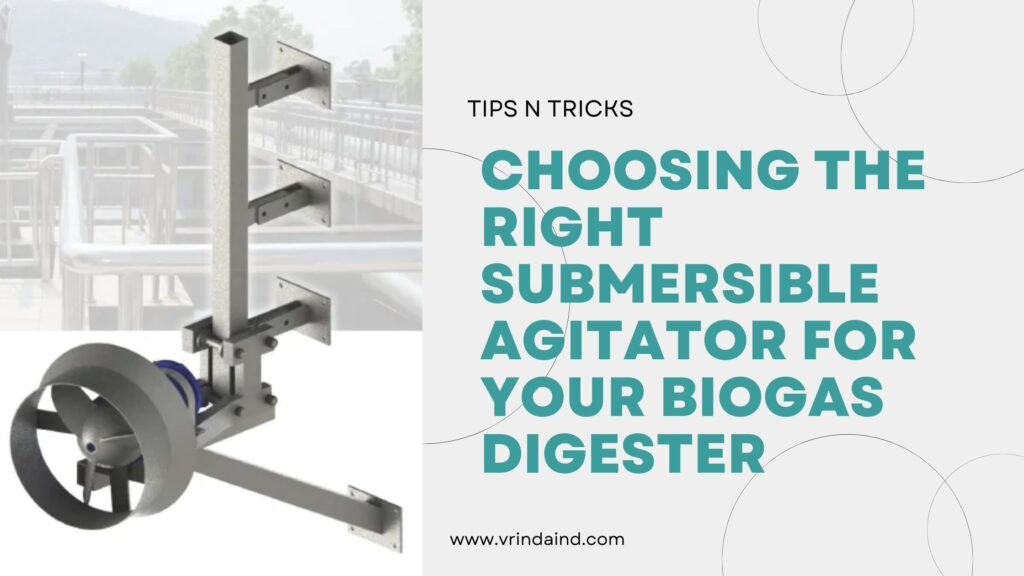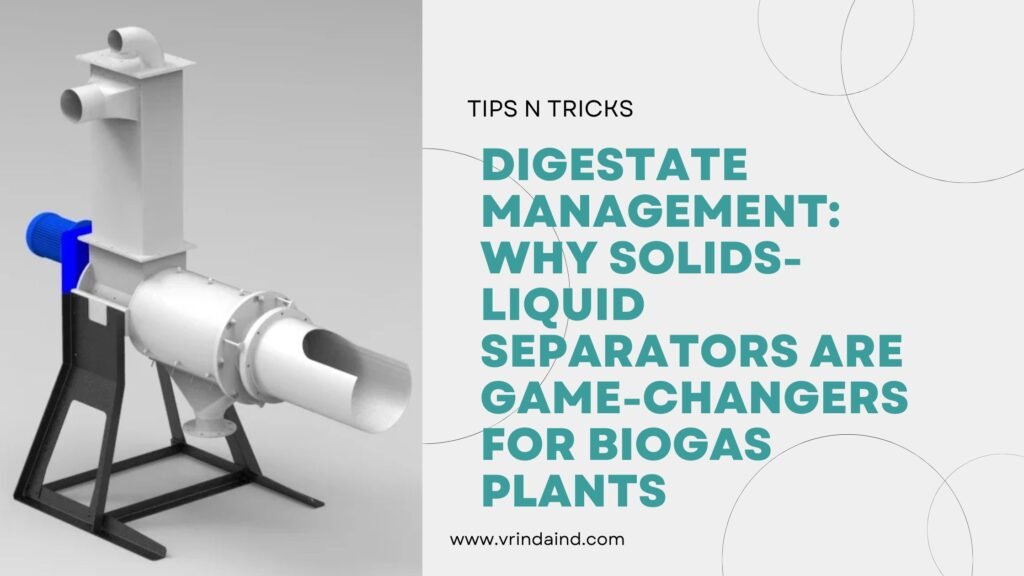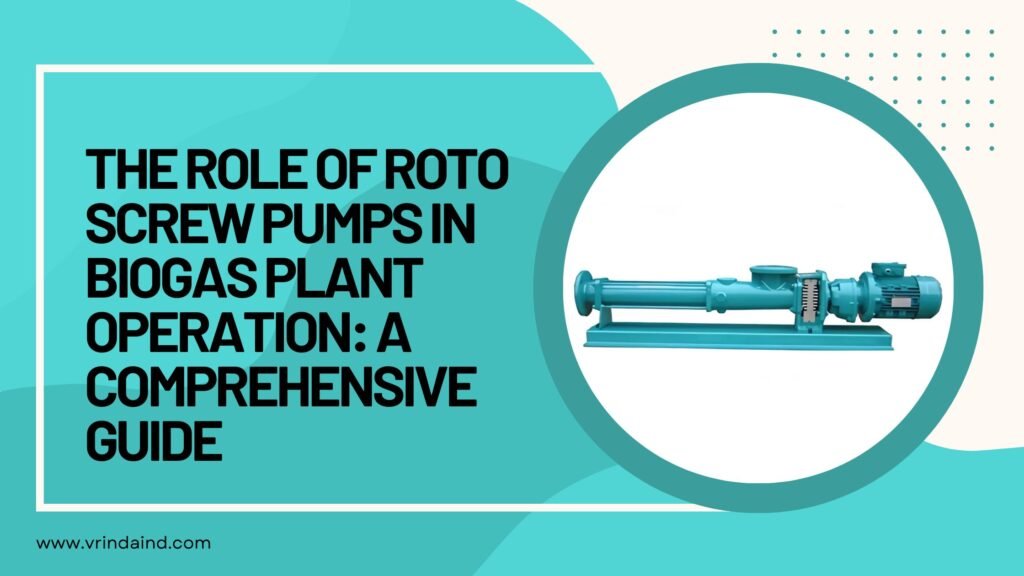You understand the immense potential of biogas plants in transforming organic waste into clean energy. But within that complex process, one component often stands as the unsung hero: the submersible agitator. Without effective mixing, even the most advanced biogas digester can underperform, leading to inefficient gas production and operational headaches.
At Vrinda Industries, as a dedicated biogas plant equipment manufacturer and exporter, we know that selecting the right submersible agitator for your biogas plant isn’t just about moving liquid—it’s about optimizing your entire anaerobic digestion process. This guide will walk you through why proper mixing is crucial and what key factors to consider when making your choice.
What is a Submersible Agitator?
A submersible agitator (often called a submersible mixer) is an electric-motor-driven device designed to operate fully immersed in the liquid contents of tanks or digesters. It features a powerful propeller that creates strong, directed currents, effectively stirring, circulating, and homogenizing the fluid. In a biogas digester, its primary role is to ensure consistent mixing of the organic substrate.
Why is Effective Mixing Crucial in a Biogas Digester?
Proper agitation is the lifeblood of an efficient biogas digester. Here’s why:
Optimizes Bacterial Activity: The microorganisms responsible for producing biogas (methane) thrive when they have continuous access to fresh organic material and nutrients. Mixing ensures constant contact between the bacteria and the substrate, boosting their activity.
Prevents Stratification and Settling: Without agitation, heavy solids can settle at the bottom, forming a thick sludge layer, while lighter materials can float to the surface, forming an impenetrable scum layer. Both inhibit digestion and reduce effective digester volume.
Enhances Gas Release: Mixing helps release trapped biogas bubbles from within the slurry and from under the scum layer, allowing the gas to rise efficiently for collection.
Ensures Uniform Temperature: Biogas digesters operate optimally within a specific temperature range. Agitation helps distribute heat evenly throughout the digester, preventing “cold spots” that can hinder bacterial performance.
Reduces Maintenance: By preventing solid buildup and maintaining homogeneity, proper mixing minimizes the need for manual cleanouts and reduces wear and tear on other equipment like pumps.
Key Factors When Choosing Your Submersible Agitator for Biogas
Selecting the ideal submersible agitator for your biogas digester requires careful consideration of several critical factors:
Digester Volume and Shape:
Volume: Larger digesters require more powerful agitators or multiple units to ensure adequate mixing.
Shape: The geometry (cylindrical, rectangular, conical bottom) influences flow patterns and the optimal placement and type (axial vs. radial flow) of agitators.
Substrate Viscosity and Solids Content:
Viscosity: Thicker slurries (e.g., concentrated manure, industrial waste) require more powerful agitators with specialized propeller designs to achieve effective mixing.
Solids Content: High solids content demands robust agitators capable of handling abrasive particles without excessive wear.
Mixing Intensity Required:
Purpose: Do you need gentle circulation, vigorous homogenization, or breaking up a thick crust? The required intensity dictates the agitator’s thrust and power.
Process Stage: Different stages of digestion might benefit from varying levels of agitation.
Energy Efficiency:
Look for agitators designed for high thrust-to-power ratios. Energy consumption is a significant operating cost in biogas plants, so efficiency directly impacts profitability.
Material Durability and Corrosion Resistance:
Biogas digesters contain highly corrosive and abrasive media. The agitator’s materials of construction (e.g., stainless steel, specific elastomers) must withstand these harsh conditions for long-term operation.
Installation and Maintenance Ease:
Consider agitators with features like guide rail systems for easy installation and retrieval without emptying the digester. Simple, robust designs reduce maintenance complexity and downtime.
Manufacturer Reputation and Support:
Choose a reputable biogas equipment manufacturer like Vrinda Industries. A good manufacturer provides not only high-quality products but also reliable technical support, spare parts, and expertise, which are invaluable over the lifespan of your biogas plant.
Vrinda Industries: Your Expert Manufacturer of Submersible Agitators
At Vrinda Industries, we understand the nuances of biogas digester mixing. We manufacture and export a comprehensive range of submersible agitators specifically engineered for the demanding conditions of biogas plants. Our agitators feature robust construction, energy-efficient designs, and powerful thrust capabilities to ensure optimal mixing, enhance biogas yield, and provide long-term reliability for your operations.
Whether you need to effectively mix thick slurries, prevent sedimentation, or maintain uniform temperatures, our expert team can help you select and customize the perfect submersible mixer for your biogas plant.
Optimize Your Biogas Production with the Right Agitator
The success of your biogas plant hinges on efficient anaerobic digestion, and at its heart lies a well-chosen submersible agitator. By considering the factors outlined above, you can ensure your digester operates at peak performance, maximizing biogas yield and contributing to sustainable waste management.

Contact Vrinda Industries today to discuss your project and learn how our expertise can benefit you!




